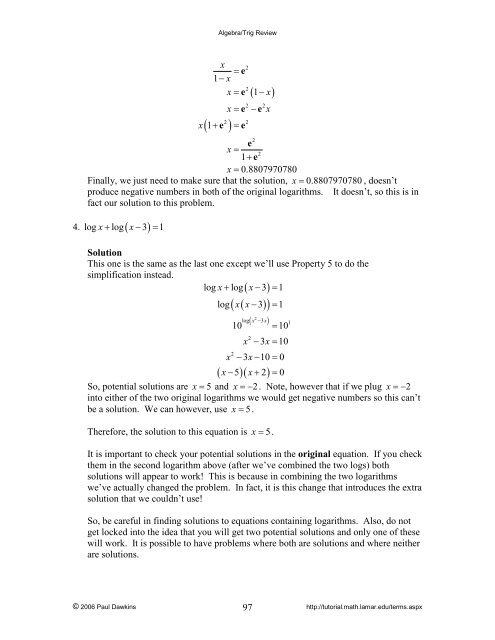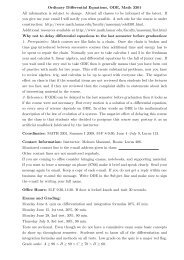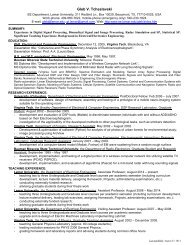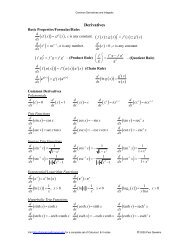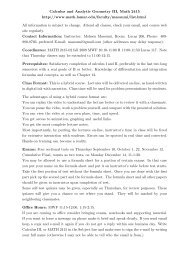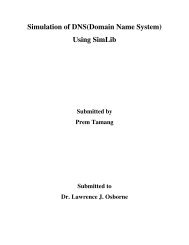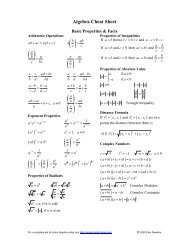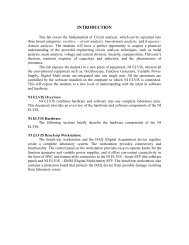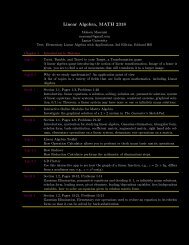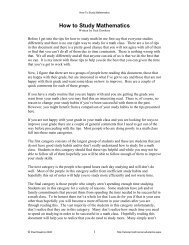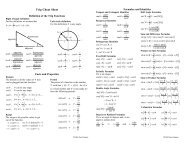Algebra/Trig Review - Pauls Online Math Notes - Lamar University
Algebra/Trig Review - Pauls Online Math Notes - Lamar University
Algebra/Trig Review - Pauls Online Math Notes - Lamar University
You also want an ePaper? Increase the reach of your titles
YUMPU automatically turns print PDFs into web optimized ePapers that Google loves.
<strong>Algebra</strong>/<strong>Trig</strong> <strong>Review</strong>x 2= e1−x2x= e ( 1−x)2 2x= e − e x2 2x( 1+ e ) = e2ex =21 + ex = 0.8807970780Finally, we just need to make sure that the solution, x = 0.8807970780 , doesn’tproduce negative numbers in both of the original logarithms. It doesn’t, so this is infact our solution to this problem.4. x ( x )log + log − 3 = 1SolutionThis one is the same as the last one except we’ll use Property 5 to do thesimplification instead.log x+ log x− 3 = 1( )( x( x ))log − 3 = 12log( x −3x)110 = 102x − 3x=102x −3x− 10 = 0( x− 5)( x+ 2)= 0So, potential solutions are x = 5 and x = − 2. Note, however that if we plug x = − 2into either of the two original logarithms we would get negative numbers so this can’tbe a solution. We can however, use x = 5.Therefore, the solution to this equation is x = 5.It is important to check your potential solutions in the original equation. If you checkthem in the second logarithm above (after we’ve combined the two logs) bothsolutions will appear to work! This is because in combining the two logarithmswe’ve actually changed the problem. In fact, it is this change that introduces the extrasolution that we couldn’t use!So, be careful in finding solutions to equations containing logarithms. Also, do notget locked into the idea that you will get two potential solutions and only one of thesewill work. It is possible to have problems where both are solutions and where neitherare solutions.© 2006 Paul Dawkins 97http://tutorial.math.lamar.edu/terms.aspx


